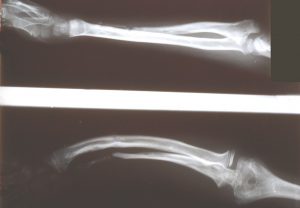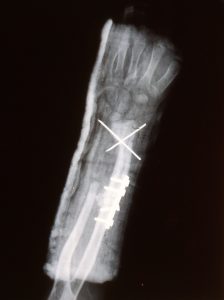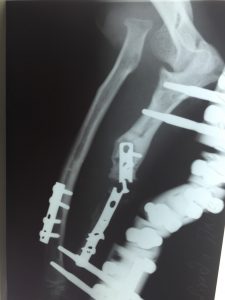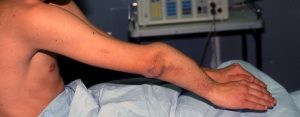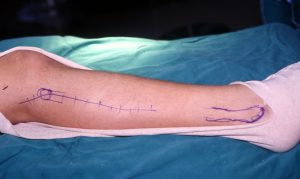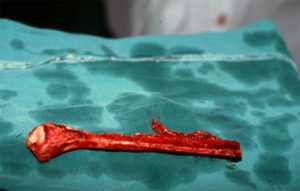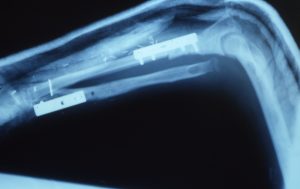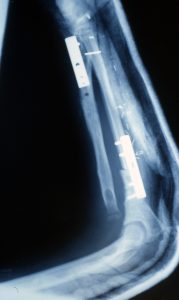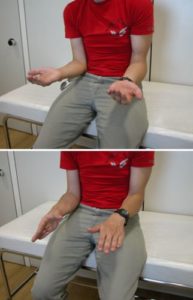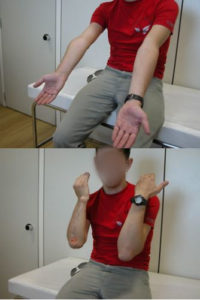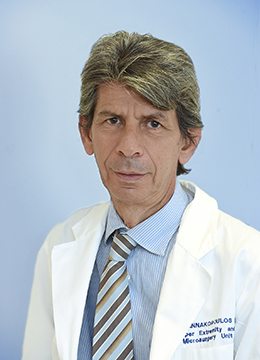ΣΥΓΓΕΝΗΣ ΨΕΥΔΑΡΘΡΩΣΗ ΩΛΕΝΗΣ
(CONGENITAL PSEUDOARTHROSIS OF ULNA)
Congenital pseudoarthrosis of the ulna presents particular difficulties in its management and, like all congenital pseudoarthroses, it may require several operations which often have little improvement. The case of a young patient with congenital pseudoarthrosis of the ulna in the setting of neurofibromatosis is presented herein.
A young 10-year old boy underwent double osteotomy of his radius for deformity correction, but 2 years later the deformity recurred and he was reoperated. The second operation included a new radial osteotomy, iliac crest autograft and screw fixation. This option failed and he was revised with plate osteosynthesis.
Two years after the second operation the graft resorbed and the deformity recurred, associated with radial head dislocation and impingement on the humerus and with painful limited flexion of the elbow as well.
Which is the next step?
The patient underwent subsequent mobilization with the use of an special external fixator which allows the pararel translation of the two bones of the forearm and the proper alignment between the radius and the ulna was gradually achieved.
Thereafter, the patient was reoperated and any pathologic bone in the ulna was removed till healthy borders were reached; a free vascularized fibular graft was then placed in the gap using the fibular head as an ulna, in an attempt to reconstruct the distal radioulnar joint. Alignment of the bones of the forearm was finally accomplished after another radial osteotomy with concomitant reconstruction of the lateral ligamentous structures of the wrist (by Secker procedure) and reconstruction of the annular ligament with the use a tendinous flap of the triceps.
At the latest follow-up (18 years post the initial operation and 12 years after the fibula transfer), the ulna appears clinically united, the patient has painless full flexion and extension in the elbow, and although his pronation/ supination is mildly restricted, he has a functional limb permitting full activity.
Congenital pseudoarthrosis of the ulna is a surgical challenge and several factors should be taken into account. The resection of the pathologic tissue from the ulna is very important for definitive treatment and the proximal part of the fibula is a reliable solution for the reconstruction of the distal radioulnar joint.
PANAGIOTIS N GIANNAKOPOULOS MD
(Η περίπτωση έχει παρουσιαστεί στο Πανευρωπαϊκό Συνέδριο Μικροχειρουργικής στη Γένοβα, Ιταλία, το 2010)


